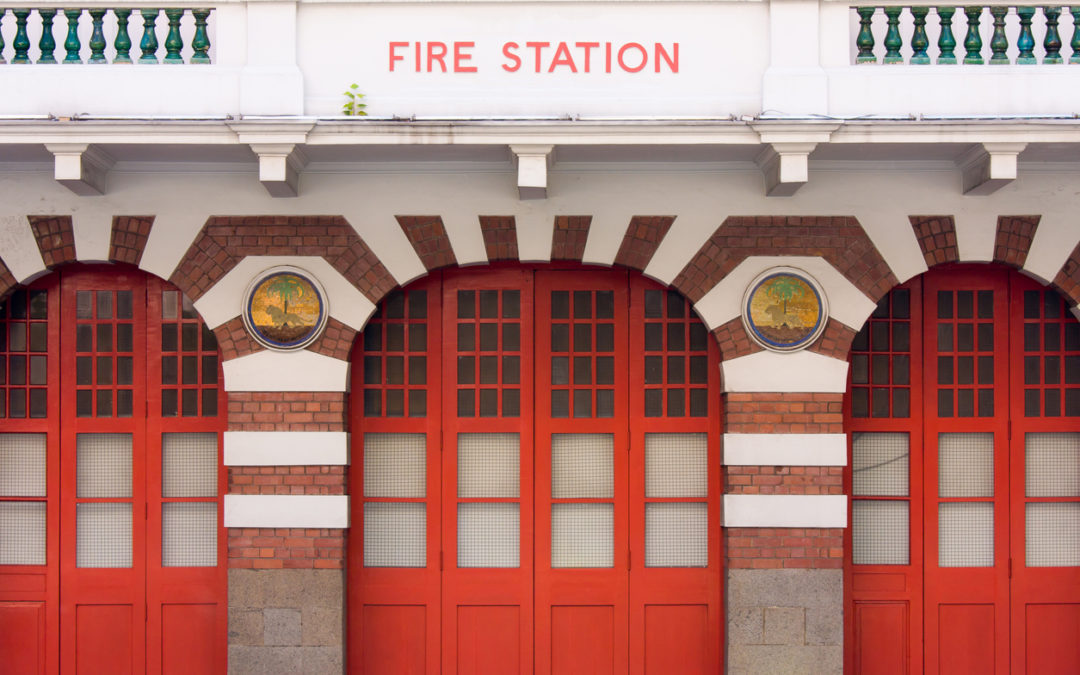By David Burks, Paladin, Inc.
It takes a special person to charge into a burning building or race to an accident scene, but our country’s firefighters and EMTs risk their lives that way pretty much on a daily basis. Making sure their fire stations are safe and comfortable is the least we can do to show our gratitude for their service. Fortunately, the commissioning discipline is a proven way to get that done.
Fire stations are truly unique when it comes to the demands of daily use. Not only are they open to the public for everything from school tours to blood pressure checks for elderly neighbors, they are also a vehicle maintenance garage, gymnasium and bunkhouse for firefighters and their gear. As such, they demand a unique mix of physical security (to protect valuable gear) and air flow management (to protect occupants from toxic fumes.)
At Paladin, we have done a number of MEP Commissioning projects on fire stations, working to ensure the buildings’ mechanical, electrical and plumbing systems are operating as designed and desired. This has afforded us the chance to spend time in a number of stations, getting an up-close look at the demands of the job. Certain systems that can be taken for granted in a standard-use building must be designed, installed and calibrated for the unique demands of firehouse life, including:
EGRESS/INGRESS SYSTEMS: We are continually amazed at the design features that lend themselves to an instantaneous departure should the alarm sound. They include quick-disconnect fittings on equipment charging systems and truck exhaust capture hoses (we recommend the Plymovent system) as well as floorplan layouts that make station departures faster & safer. They also utilize bay doors specialized for super-quick actuation (open & close) so firefighters can make a quick exit AND return to find their expensive equipment and personal belongings have been secure in their absence. In one station, we discovered that the natural gas supply was leaking to the cooking equipment during emergency power operation. With the possibility of personnel abruptly leaving, we determined that a manual reset solenoid valve was a safer option.
VENTILATION AND OUTSIDE AIR SYSTEMS: Not only do firefighters sleep mere feet away from carbon-monoxide-generating firetrucks, they often return from calls with their turnout gear (the distinct helmets, boots, coats & overalls they wear) contaminated with soot and even hazardous materials. Ensuring sleeping, dining and office spaces can maintain positive air pressure is a critical concern for firefighter comfort and long-term health.
LIGHTING SYSTEMS: Firehouses can be a noisy environment thanks to idling engines, rock music during a workout or even the snoring of a nearby bunkmate. Personnel often manage that noise level with earbuds or earplugs which can make alarms difficult to hear. For that reason, the alarm system is often tied into the lighting controls so that flashing lights can echo a call from dispatch. Unfortunately, the associated signal interruptions have been known to wipe customized light programming clean, requiring outside contractor intervention to get the system back on track. More than once, we have recommended keeping alarm & lighting systems on separate power & control systems to ensure reliability of service.
“RESILIENCE” MEASURES: When disasters like a tornado, ice storm, or wildfire hit, most neighborhoods and offices will evacuate, but first responders stick around, so there is a high priority placed on systems that provide continuity. This includes the ability to operate on generator and battery power as well as storage for supplies that will last the duration of the event.
ENVIRONMENTAL CONTROLS: it turns out that the typical firefighter, whose average core temperature is already elevated thanks to a steady supply of adrenaline in his or her bloodstream, has a pretty specific preference when a day of battling blazes is done: a sleeping area that is ice cold and pitch black. They tell us it’s restorative to trade the heat, noise and stress of a burning building for a bit of sensory isolation. So, we encourage designers to get comfortable locating sleeping areas closer to the station’s core to increase thermal barriers and eliminate light leaks from windows.
At the end of the day, firefighters are driven by more than the size of their paycheck. They are wired to risk their lives in the service of others. We feel fortunate to leverage our commissioning expertise in providing them a firehouse that works as it should. Surrounding them with constant reminders of community support in the form of simple things like breathable air and comfortable accommodations go a long way to showing we all care.

